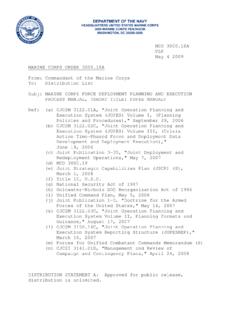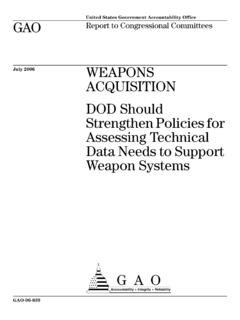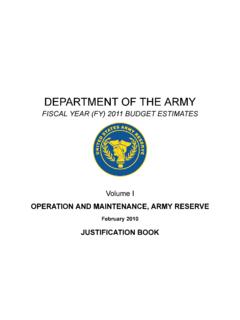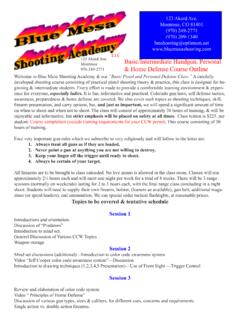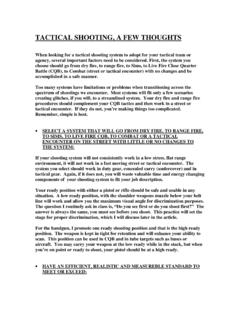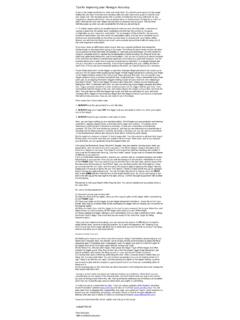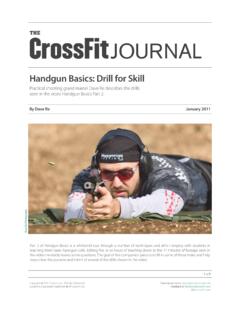Transcription of Chapter 4 Fundamentals of Pistol Marksmanship
1 MCRP 3-01B Pistol Marksmanship Chapter 4 fundamentals of pistol marksmanship The Fundamentals of Pistol Marksmanship are aiming, trigger control, and breath control. Understanding and applying the basic Pistol Marksmanship Fundamentals will ensure the Marine's effectiveness in target engagement. The Fundamentals must be continually studied and practiced because they are the means by which accurate shots are placed on target. A Marine with a solid foundation in the Fundamentals of Marksmanship translates to success in combat. 4001. Aiming Maintaining the correct relationship between the Pistol sights is essential for accurate target engagement. Because of the short distance between the Pistol sights, a small error in their alignment causes a considerable error at the target.
2 A. Sight Alignment. Sight alignment is the relationship between the front sight and rear sight with respect to the aiming eye. Correct sight alignment is the front sight centered in the rear sight notch with the top edge of the front sight level with the top edge of the rear sight. There should be equal space on either side of the front sight. See figure 4-1. Figure 4-1. Sight Alignment. b. Establishing Sight Alignment. The Pistol is fired without benefit of bone support; therefore, the Pistol is in constant motion. The Marine must recognize this and accept this movement, but continually strive for aligned sights. To fire accurately, the sights must be aligned when the shot breaks. (1) Grip. The grip is key to acquiring sight alignment.
3 If the grip is correct, the front and rear sights should be naturally aligned. Dry fire in presentation will aid in obtaining a grip that will allow sight alignment to be acquired consistently. 4-1 MCRP 3-01B Pistol Marksmanship (2) Controlled Muscular Tension. There must be enough controlled muscular tension in the grip, wrists, and forearms to hold the weapon steady and level the Pistol barrel to maintain sight alignment. Consistent tension allows the sights to be stabilized so sight alignment can be maintained c. Sight Picture. Sight picture is the placement of the front sight in relation to the target while maintaining sight alignment. See figure 4-2. Figure 4-2. Sight Picture. (1) Because the Pistol is constantly moving, sight picture is acquired within an aiming area center mass on the target.
4 Aiming area is defined as the movement of the sights on the target while maintaining sight alignment. Each individual must define an acceptable aiming area within his own capability to stabilize the sights. Time, distance to the target, and personal ability will dictate what this aiming area is. As proficiency is acquired, the aiming area will become more precise. (2) The aiming area is based on the individual s stability of hold. A proper grip will stabilize the sights so sight alignment can be maintained, but the sights will continuously move within the aiming area on the target. The Marine must accept the movement he sees with the Pistol and learn to apply trigger control as he is obtaining sight alignment/sight picture within the aiming area so the shot breaks the moment sight picture is established.
5 (3) Correct sight picture is the placement of the aligned sights within an acceptable aiming area. 4-2 MCRP 3-01B Pistol Marksmanship d. Relationship Between the Eye and the Sights. The human eye can focus clearly on only one object at a time. The Marine must focus on the top edge of the front sight and fire the shot while maintaining the relationship between the front and rear sights within the aiming area. A focus on the top edge of the front sight rather than the target will allow the Marine to detect minor variations in sight alignment. The sight should be clear and distinct. The target will appear slightly blurred. Secondary vision allows the Marine to see the target and maintain sight picture within his aiming area. 4002. Trigger Control Trigger control is the skillful manipulation of the trigger that causes the Pistol to fire while maintaining sight alignment and sight picture.
6 Proper trigger control aids in maintaining sight alignment while the shot is fired. a. Sight Alignment and Trigger Control. Aiming and trigger control are mutually supportive--one cannot be performed without the other. As pressure is applied to the trigger, the sights may move, causing them to be misaligned. To be accurate, the sights must be aligned when the shot breaks. Trigger control can actually assist in aligning the sights. With proper trigger finger placement and consistent muscular tension applied to the grip, the sights can be controlled as the trigger is moved to the rear. If the sights move extensively while pressing the trigger, this is usually an indication of an improper grip or inconsistency in the muscular tension applied to the grip.
7 Sight alignment and trigger control must be performed simultaneously to make an accurate shot. b. Grip. A firm grip is essential for good trigger control. The grip is established before applying trigger control and is maintained throughout the shot-firing process. The hand is placed around the Pistol grip in a location that allows the trigger finger to move the trigger straight to the rear while maintaining sight alignment. Once established, the grip should be firm enough to allow manipulation of the trigger while maintaining sight alignment. There must be equal to or more pressure applied to the grip than the pressure required to move the trigger to the rear. If not, the sights will move as the trigger is pressed to the rear. c. Trigger Finger Placement.
8 Once the grip is established, the finger is placed on the trigger. Placement of the finger should be natural and allow free movement of the trigger finger. (1) A natural trigger finger placement allows the trigger to be moved straight to the rear while maintaining sight alignment. If the finger presses the trigger to the side, it can cause an error in sight alignment and shot placement. (2) Each Marine must experiment with finger placement to select an effective placement on the trigger that allows the trigger to be consistently moved straight to the rear while maintaining sight alignment. d. Types of Trigger Control. There are two types of trigger control: 4-3 MCRP 3-01B Pistol Marksmanship (1) Uninterrupted Trigger Control. Using this method, the Marine applies a steady, unchanging pressure to the trigger until the shot is fired.
9 Uninterrupted trigger control is particularly effective at close range, when the target area is large, and stability of hold is not as critical to accuracy. To apply uninterrupted trigger control, apply pressure on the trigger while maintaining focus on the top edge of the front sight. Continue pressure on the trigger to begin moving the trigger straight to the rear while obtaining sight alignment and sight picture. Move the trigger straight to the rear in a single, smooth motion with no hesitation. (2) Interrupted Trigger Control. Interrupted trigger control is particularly effective at longer ranges, when the target is small, and stability of hold is critical to maintaining sight picture in the aiming area. This method is used if the Pistol sights move outside the aiming area when applying trigger control.
10 Using this method, the Marine applies initial pressure to the trigger to begin rearward movement. If the sight picture is outside the aiming area, the Marine stops and holds the rearward movement on the trigger until sight picture is reestablished. When sight picture is reestablished, the rearward movement of the trigger is continued until the shot is fired. 4003. Breath Control Breathing causes movement of the chest, abdomen, and shoulders, which causes the Pistol sights to move vertically while attempting to aim and fire. Therefore, it is necessary to stop breathing for a period of time while firing a shot or a series of shots. Breath control allows the sights to be stabilized while firing a shot. The object of breath control is to stop breathing just long enough to fire the shot while maintaining sight alignment and establishing sight picture.
